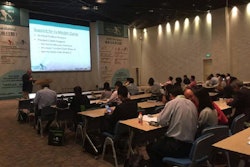Upon the release of the Food Safety Modernization Act "Current Good Manufacturing Practices and Hazard Analysis and Preventive Controls for Food for Animals" final rule by the U.S. Food and Drug Administration, the American Feed Industry Association (AFIA) has provided the following statement based on its initial reaction and brief overview.
"AFIA is pleased with how transparent FDA has remained throughout this entire rulemaking process. This has been no easy endeavor for the agency and they should be commended. The rule's finalization will now allow AFIA to move forward with preparing our members and the industry for implementation of the largest change to animal food regulation since the 1950s.
"Upon brief review, AFIA is pleased FDA followed through with our request for a phase-in approach to implementation, giving all animal food manufacturing facilities additional time to execute CGMPs (Current Good Manufacturing Practices) first, followed by the hazard analysis and preventive controls. The phase-in process, as we have said all along, benefits everyone. It allows firms more time for adjustment to basic program requirements such as CGMPs before adhering to more complicated aspects of the final rule.
"AFIA is also pleased FDA recognized animal food is different from human food in revising the CGMPs to be more applicable to animal food facilities and addressing the hazards in our industry.
"Due to the adaptation of the phase-in approach and the revisions to the CGMPs, the animal food rule cost-to-benefit ratio is more realistic. Although AFIA maintains FSMA will always be a costly regulation, we acknowledge FDA's attempt to equalize the gap between the cost and the limited benefits in the final rule.
"With the release of the rule, the clock starts ticking for the industry as we inch closer to the first implementation deadline in September 2016. AFIA will proactively be reading, studying and helping industry implement the rule at their facilities. We also plan to continue the conversation with FDA as this process moves forward to better understand FDA's intentions and ensure transparency."













